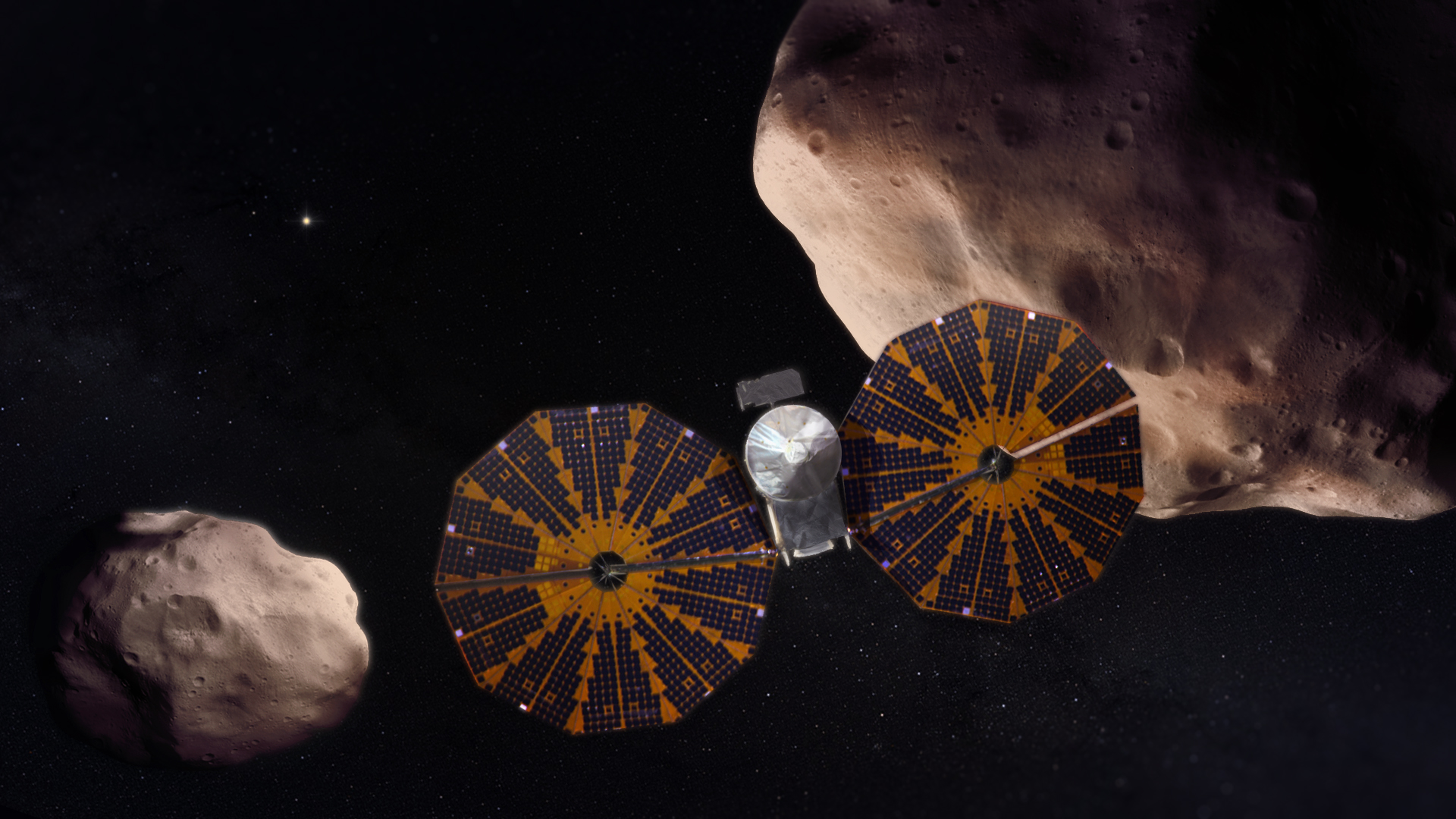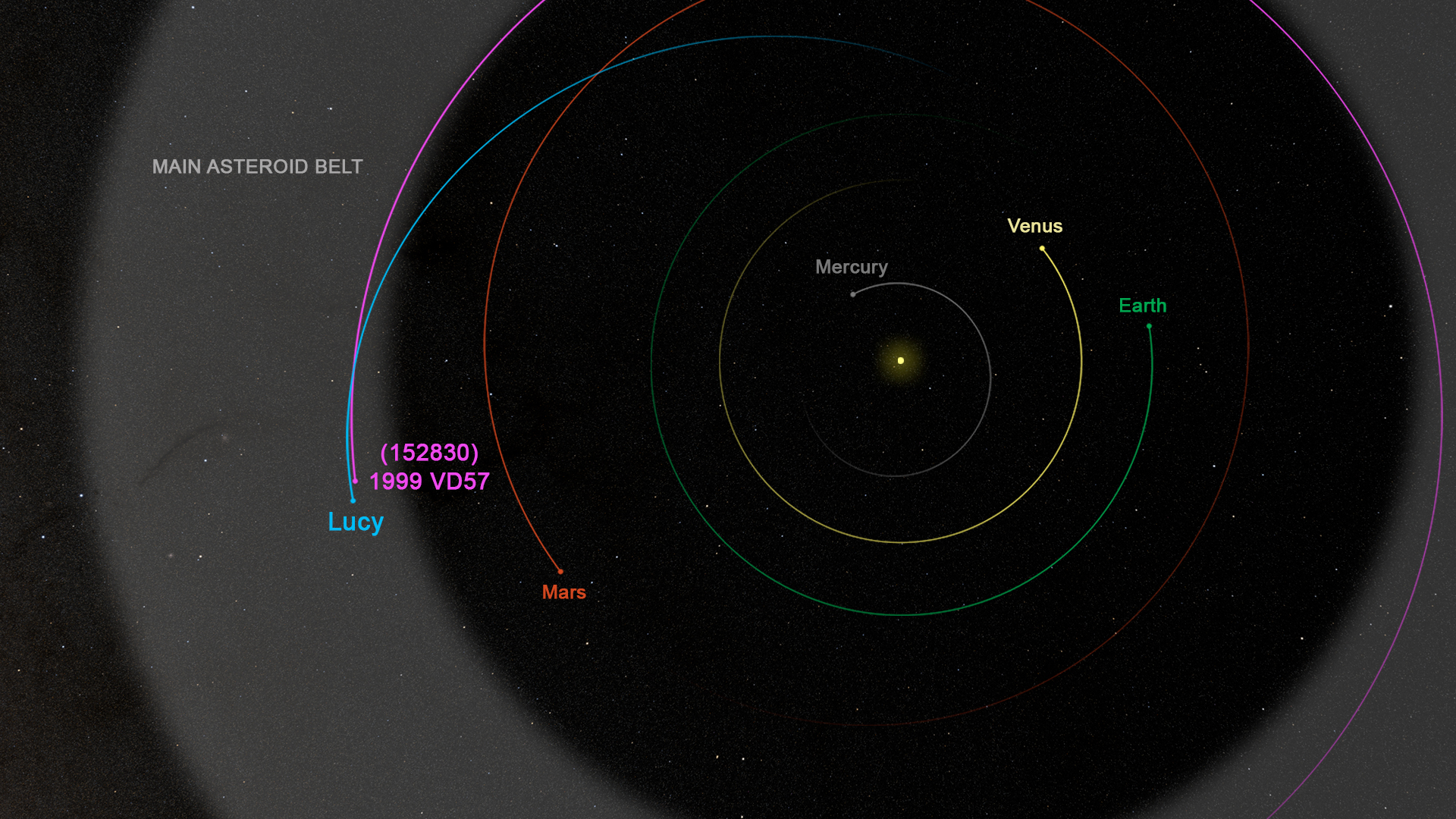NASA's Lucy asteroid mission adds 10th space rock target
Lucy will fly by the small main belt asteroid 1999 VD57 on Nov. 1.

NASA's Jupiter Trojan asteroid-scouting mission has been given an additional space rock to visit, bringing the journey's total to 10 asteroids.
The Lucy mission team officially added main-belt asteroid 1999 VD57 to Lucy's list of targets on Jan. 24. The addition will allow the spacecraft to test its innovative target tracking system and introduce us to another small world years before Lucy reaches its primary science targets in the outer solar system.
"There are millions of asteroids in the main asteroid belt," Raphael Marschall, a Lucy collaborator at the Nice Observatory in France, who identified asteroid 1999 VD57 as an object of special interest for Lucy, said in a statement. "This asteroid really stood out. Lucy's trajectory as originally designed will take it within 40,000 miles of the asteroid, at least three times closer than the next closest asteroid."
Related: The greatest asteroid missions of all time!
Lucy launched in October 2021 and is on a 12-year-long mission to visit two separate sets of Jupiter's Trojan asteroids, which orbit the sun ahead of and behind the giant gas planet, reaching these groups in 2027 and 2033 respectively.
Asteroid 1999 VD57 is an S-type, or stony, asteroid with the provisional name Dinkinesh, Hal Levison, Lucy principal investigator and a planetary scientist at the Southwest Research Institute in Colorado, said on Thursday (Jan. 26) at a presentation to NASA's Small Bodies Advisory Group. The asteroid was not identified as a target earlier because it is extremely small, according to the team, but its presence now offers the mission a useful opportunity to conduct an extra dress rehearsal for its Trojan tour.
Lucy's original trajectory would have taken it within 40,000 miles (64,400 kilometers) of the 2,300-foot (700 meters) diameter asteroid, but a series of small maneuvers beginning in May will allow the spacecraft to make a much closer approach, coming within approximately 280 miles (450 km) on Nov. 1.
Breaking space news, the latest updates on rocket launches, skywatching events and more!
The flyby will give the team an early opportunity to test its twin Terminal Tracking Cameras (T2CAM), which the spacecraft will mainly use to automatically lock onto and track asteroids during flybys and make sure Lucy's other instruments are pointed in the right direction, which has traditionally been tricky.
"In the past, most flyby missions have accounted for this uncertainty by taking a lot of images of the region where the asteroid might be, meaning low efficiency and lots of images of blank space," Levison said in a statement.
"Lucy will be the first flyby mission to employ this innovative and complex system to automatically track the asteroid during the encounter," he said. "This novel system will allow the team to take many more images of the target."
Lucy has already imaged the moon when it made the first of three flybys of the Earth that will enable its journey to Jupiter's Trojans. The mission team also recently announced that they had suspended efforts to fully deploy one of the spacecraft's solar arrays, leaving it at 98% unfurled; the team is confident this missing slither will not impact the mission, officials said.
The mission's first encounter with a space rock was previously slated to be its 2025 flyby of the main belt asteroid 52246 Donaldjohanson, named for the paleontologist who discovered the fossil Lucy, which in turn inspired the name of the NASA mission.
Follow us on Twitter @Spacedotcom and on Facebook.

Andrew is a freelance space journalist with a focus on reporting on China's rapidly growing space sector. He began writing for Space.com in 2019 and writes for SpaceNews, IEEE Spectrum, National Geographic, Sky & Telescope, New Scientist and others. Andrew first caught the space bug when, as a youngster, he saw Voyager images of other worlds in our solar system for the first time. Away from space, Andrew enjoys trail running in the forests of Finland. You can follow him on Twitter @AJ_FI.

